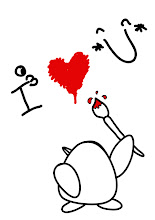Creative

A creative person is a person who generate new ideas. A creative process is how these new ideas, solutions, and inventions produced. Creativity involves the translation of our unique gifts, talents, and vision into an external reality that is new and useful. It takes place unavoidably inside our own personal, social, and cultural boundaries.
The picture at the left shows that the creativity of the Japanese. They invented this butter stick. When you are racing against time, this butter stick will come handy. You do not have to use a butter knife and you can bring the butter stick with you because it is compact.
Creativity appears to be utilized in varying degrees by different people with different culture and backgrounds.
Innovation
Creativity sometimes can be misunderstood with innovation. According to Wikipedia, innovation is a change in the thought process for doing something or "new stuff that is made useful".
Novelty
Novelty is derived from Latin word novus for "new". Although it may be said to have an objective dimension, it essentially exists in the subjective perceptions of individuals. Novelty is the quality of being new. Subjective novelty is a perception of something as being new by an individual person or a group of persons. Objective novelty is something that is new for all humanity in its development through ages.
Ludwig van Beethoven

The public figure that we have chosen is Ludwig van Beethoven. He was a very famous German composer and pianist. He was the most crucial figure in the transitional period between the Classical and Romantic eras in western classical music and remains one of the most famous and influential composers of all the time.
Beethoven had given many contributions in the musical industries. First of all, Beethoven’s Symphony No. 9 was the first symphony that used a vocal component. Beethoven had successfully pushed the boundaries of music as his first symphony wan seen as strange, over extravagant and even risqué. Besides that, he was the one of the composers of post-Renaissance era to use, systematically, interlocking thematic devices, or “germ-motifs”, to achieve inter-movement unity in long compositions. He also brought innovations of most of the genres in which he worked; for example, he introduced elasticity to the previously well-crystallized form of the rondo, drawing it closer to sonata form. He re-envisioned the symphony into a freer and more expensive form. He built on the sonata form, write longer and more ambitious movements.























